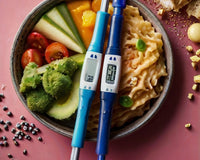HealthyPIG Magazine

sodium in diet
Despite what many people think, most dietary sodium (more than 70%) comes from eating packaged and prepared foods—not from table salt added to food during cooking or eating. There is too much sodium in the food supply, and Americans who want to reduce their sodium intake may have a hard time doing so. That’s why the U.S. Food and Drug Administration is working with the food industry to rationally reduce the amount of sodium in a variety of foods. Although sodium may already be present in many packaged foods when you purchase them, you can lower your daily sodium intake by using the Nutrition Facts label.

Low-sodium diet guide
The main source of sodium is table salt. The average American eats five teaspoons or more of salt a day. This is about 20 times the body requirement. In fact, your body only needs 1/4 teaspoon of salt a day. Sodium is naturally present in food, but large amounts of sodium are added during processing and preparation. Many non-salty foods may still contain high sodium. Large amounts of sodium may be hidden in canned foods, processed foods, and convenience foods. Sodium can be found in many foods served in fast food restaurants.

Sodium in the diet-use nutrition labeling and reduce intake
People need a small amount of sodium to work properly, but too much sodium may be harmful to your health. According to the American Dietary Guidelines, a high-sodium diet increases the risk of high blood pressure, which is the main cause of stroke and heart disease.
Most dietary sodium (over 70%) comes from edible packaging and prepared foods, not from salt added during cooking or eating. Many foods contain too much sodium, so the US Food and Drug Administration (FDA) cooperates with the food industry to reasonably reduce the sodium content in various foods. Even though sodium may already be contained in many packaged foods at the time of purchase, you can still use the nutrition label to reduce your daily sodium intake.


